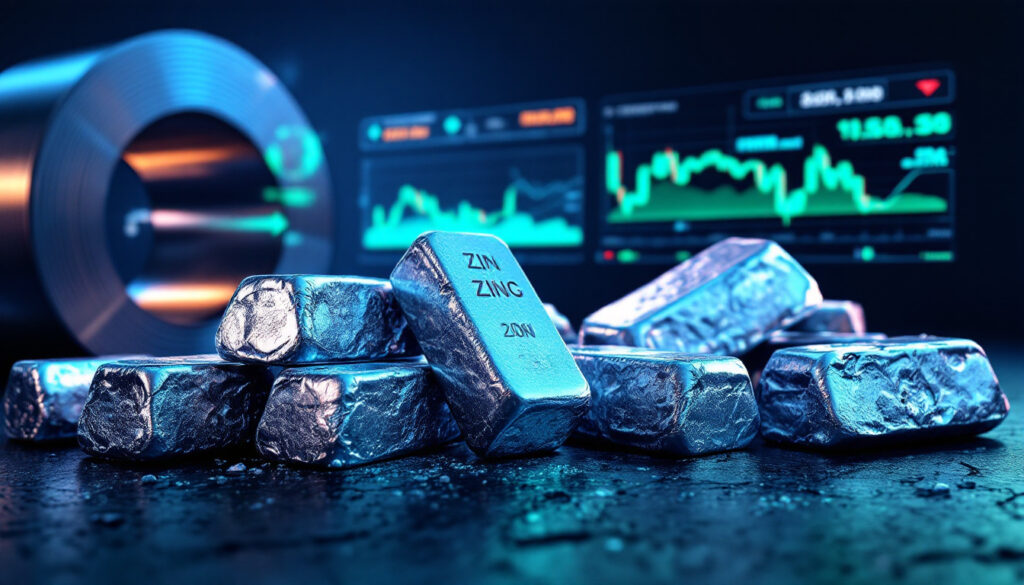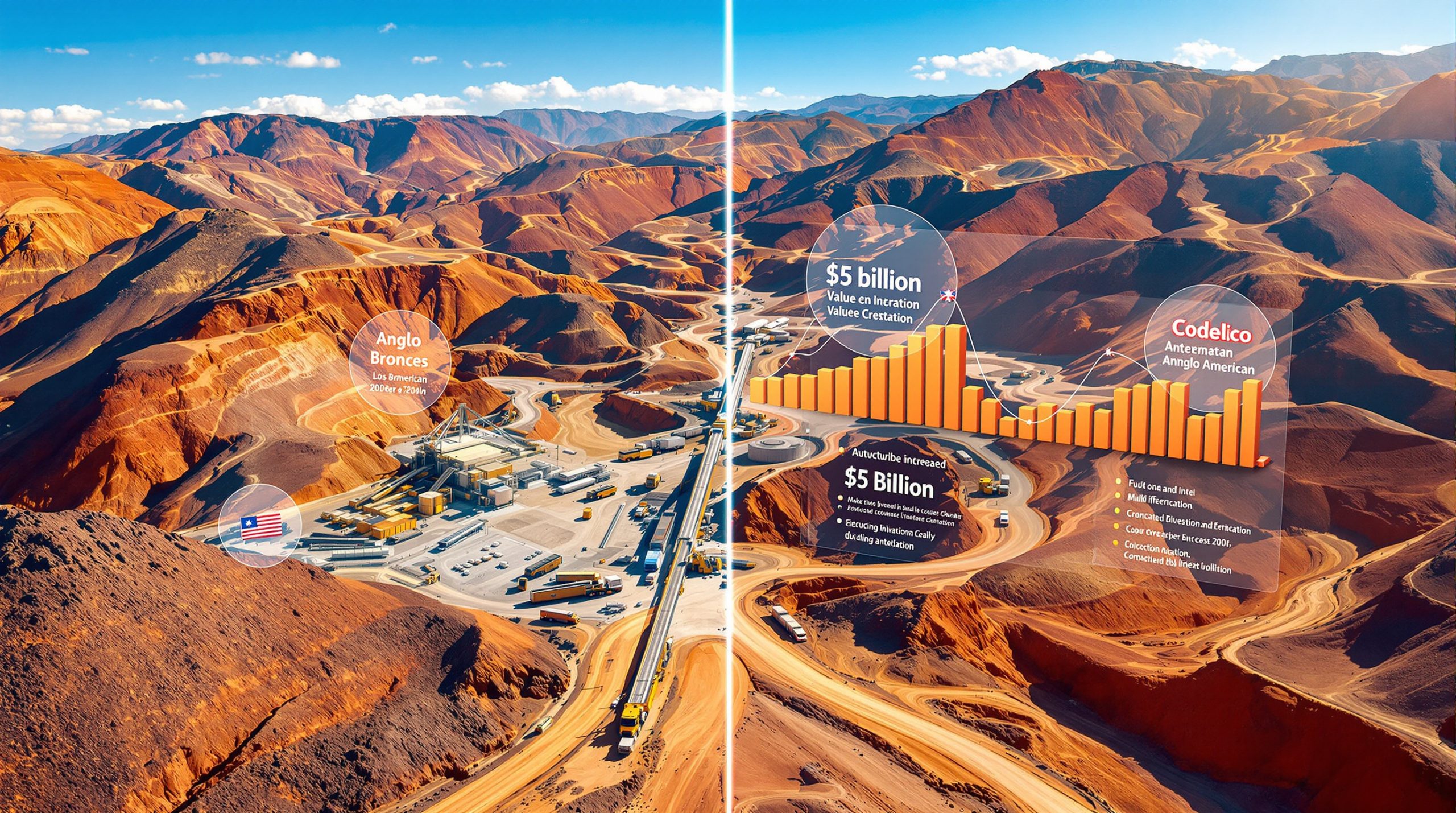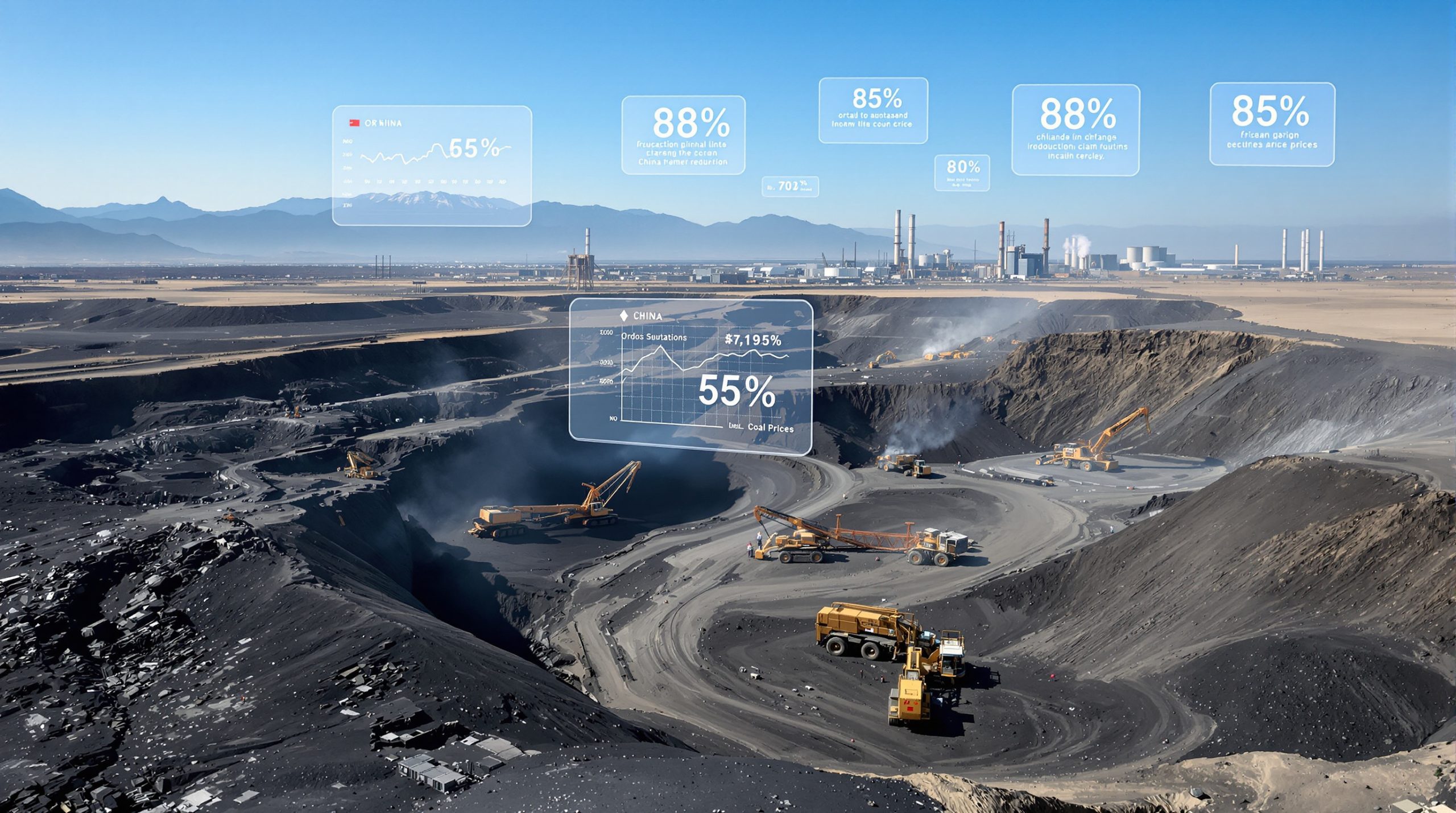What Are the Current Trends in Global Zinc Prices?
Global zinc prices have been displaying a fluctuating trend throughout recent trading sessions, characterized by initial gains followed by notable pullbacks. This pattern reflects broader market uncertainty and suggests limited directional conviction among traders.
LME Zinc Price Performance
The London Metal Exchange (LME) zinc price opened at $2,638 per metric ton in the most recent trading session, reaching an intraday high of $2,658/mt before retreating significantly. The metal ultimately closed at $2,613/mt, reflecting a decline of $13.5/mt (0.51%) from the previous session.
Trading activity showed decreasing engagement, with volume dropping to 10,498 lots while open interest increased by 2,309 lots to reach 211,000 lots. This combination of lower volumes and higher open interest often signals cautious market sentiment.
From a technical perspective, price action formed a bearish candlestick pattern with resistance clearly established at the upper Bollinger Band. This technical formation typically suggests continued downward pressure in subsequent sessions.
SHFE Zinc Contract Analysis
China's Shanghai Futures Exchange (SHFE) zinc contracts showed similar patterns but with slight positive momentum. The most-traded SHFE zinc 2506 contract opened at 22,245 yuan/mt and surged to an intraday high of 22,455 yuan/mt before pulling back significantly. The contract closed at 22,240 yuan/mt, managing a modest gain of 30 yuan/mt (0.14%).
Similar to LME patterns, SHFE trading volume decreased to 80,117 lots while open interest increased by 5,163 lots to 122,000 lots. The contract formed a long upper shadow bearish candlestick with the 10-day moving average acting as clear resistance.
Market analysts note that the persistent disparity between opening strength and closing weakness indicates selling pressure emerging at higher price levels, limiting sustainable upward momentum across both exchanges.
Why Is Zinc Supply Remaining Loose in 2025?
The global zinc market continues to face persistent supply pressures, with multiple factors contributing to what industry experts describe as a "loose" supply situation expected to continue through 2025.
Import Dynamics Affecting Supply
A key driver behind the current zinc supply surplus has been the significant increase in imported zinc ingots flowing into key consumption markets, particularly China. Import volumes have risen approximately 12% year-over-year, contributing substantially to warehouse stockpiles that reached 228,000 metric tons by May 2025.
This consistent replenishment through imports has effectively maintained supply surplus conditions, despite occasional production disruptions at regional smelters. The reliable inflow of material has firmly established market expectations for continued loose supply conditions throughout the remainder of 2025.
Global zinc mine output has shown robust growth, increasing 4.3% in Q1 2025 compared to the previous year. This production growth has been led primarily by Australian operations (+8%) and Peruvian mines (+6%), ensuring ample concentrate availability for smelters worldwide.
Industry expert data from CRU Group indicates that "smelters are operating at 82% capacity, but demand growth remains stagnant," creating a fundamental imbalance that continues to pressure zinc prices.
Demand-Side Factors
The demand picture for zinc remains particularly challenging, with consumption metrics failing to balance the increased supply. Multiple key consuming sectors have shown mediocre performance, with European construction sector demand notably declining 5% year-over-year.
This weak fundamental support for zinc prices is evidenced in smelter profitability margins, which have declined to approximately $150/mt compared to $210/mt in 2024. The compression in margins highlights the market's oversupply situation and limited pricing power among producers.
Historical precedent suggests the significance of this supply overhang. In 2023, a 15% surge in Australian mine output similarly exacerbated oversupply conditions, pushing prices below the critical $2,500/mt threshold for an extended period.
How Are Macroeconomic Factors Influencing Zinc Prices?
Zinc prices, like most industrial metals, remain highly sensitive to broader macroeconomic conditions. Currently, several significant macroeconomic factors are exerting considerable influence on the zinc market's direction.
Dollar Strength Impact
The continued strengthening of the US dollar represents one of the most significant headwinds for zinc prices. The US Dollar Index (DXY) has strengthened to 105.2 in May 2025, creating persistent downward pressure on dollar-denominated metals.
According to analysis from Bloomberg Economics, "Zinc is highly sensitive to currency fluctuations; a 1% dollar rise typically lowers prices by $20/mt." This relationship has intensified in recent months, with zinc's 30-day correlation with the DXY strengthening to -0.78 in 2025 (compared to -0.65 in 2024).
This strengthening negative correlation underscores the critical importance of monitoring currency markets when forecasting zinc price movements. Historical data supports this relationship – during the 2022 dollar rally, zinc prices dropped 22% in just six months as currency effects overwhelmed physical market fundamentals.
International Trade Concerns
Market sentiment remains cautious regarding the international trade situation, with global trade volumes falling 1.9% month-over-month in April 2025 amid ongoing tariffs impact markets and trade tensions.
The implementation of European Union carbon border taxes is creating additional complications for zinc-intensive industries, potentially reducing demand from affected sectors. Meanwhile, China's manufacturing activity continues to show signs of contraction, with April 2025 PMI data registering at 49.4, below the expansion threshold.
These trade concerns have prevented any significant improvement in macro sentiment surrounding industrial metals, creating an environment where even positive fundamental developments struggle to generate sustained price rebounds. This situation mirrors challenges seen with US economy and tariffs affecting various commodity markets.
What Technical Indicators Are Signaling for Zinc's Price Direction?
Technical analysis provides valuable insights into potential price direction, with current indicators suggesting continued challenges for zinc prices in the near term.
Chart Pattern Analysis
Both LME and SHFE zinc charts display concerning technical formations. Bearish candlestick patterns, particularly the long upper shadows on recent SHFE charts, reflect persistent selling pressure emerging at higher price levels.
SMM technical analysts note that "the long upper shadow on SHFE charts reflects persistent selling pressure," indicating that sellers consistently overwhelm buyers when prices attempt to rally.
Resistance levels have formed at key technical indicators, with the upper Bollinger Bands effectively capping upside attempts. The 50-day moving average ($2,650/mt) now acts as critical resistance, with a break below $2,600/mt potentially triggering stop-loss selling and accelerating downside momentum.
Fibonacci retracement analysis identifies $2,580/mt as a crucial support level that, if broken, could signal a more significant decline toward the 2023 low of $2,380/mt.
Trading Volume and Open Interest Insights
The combination of trading activity metrics provides additional technical context. Decreasing trading volumes indicate potential market hesitation and reduced conviction among participants. However, increasing open interest suggests new positions are being established.
When analyzed together, the pattern of open interest increases during price declines strongly suggests new short positions are being initiated rather than fresh buying interest emerging. This technical dynamic typically reinforces the prevailing downward pressure.
Bollinger Band width contraction (-18% month-over-month) signals reduced volatility and potential consolidation before the next significant price move. Historically, such periods of compressed volatility often precede larger directional movements.
What Are the Treatment Charges (TCs) Trends in the Zinc Market?
Treatment charges (TCs) represent a critical forward-looking indicator for zinc market participants, offering insights into the relationship between mine supply and smelter demand.
Recent TC Developments
A significant development in the zinc market has been the notable slowdown in the growth rate of zinc concentrate treatment charges. TCs grew only 2% month-over-month in May 2025, compared to an 8% increase in April, suggesting that concentrate supply growth may be plateauing.
Spot TCs in China have stabilized in the range of 5,000–5,200 yuan/mt, reflecting more balanced negotiations between smelters and miners. According to Wood Mackenzie analysis, "Slowing TC growth hints at tighter concentrate markets in H2 2025," potentially signaling a shift in the zinc market's fundamental balance.
This stabilization raises important questions about whether TCs are approaching peak levels, which could have significant implications for future refined zinc supply. The current TC benchmarks, calculated using smelter capacity utilization and spot market premiums, suggest the market may be approaching an inflection point.
Supply Chain Implications
Treatment charge trends directly reflect upstream supply conditions and have profound implications throughout the zinc supply chain. The historical precedent from 2021 is particularly instructive – when TCs fell below $100/mt, smelters were forced to cut output by approximately 15% due to profitability constraints.
TC data shows a negative correlation with LME prices (r = -0.63 since 2020), highlighting their importance as a counter-cyclical indicator. As renewable energy demand increases, concentrate allocation patterns may shift, potentially accelerating TC changes if smelters compete more aggressively for available material.
The relationship between TCs and refined zinc production rates creates a feedback loop that can eventually correct market imbalances. Current TC levels remain supportive of smelter operations, but the slowing growth rate represents an early indicator of possible future supply constraints that could eventually support prices.
Zinc Market Outlook for 2025
Looking ahead, several key factors will influence zinc market conditions and price performance through the remainder of 2025.
Supply-Side Projections
Continued loose zinc supply and fluctuating trend conditions are expected to persist in the near term, with the World Bank forecasting a 2025 surplus of approximately 350,000 metric tons. This substantial oversupply is projected to keep average prices around $2,550/mt throughout the year.
However, potential stabilization may emerge if the slowdown in TC growth continues, indicating tightening concentrate availability. This dynamic bears close monitoring as mine production growth rates could moderate in response to sustained price pressure.
Import flows will remain a critical factor in determining market balance, particularly in China where domestic consumption patterns interact with global supply trends. Production adjustments become increasingly likely if prices remain under pressure, with CRU analysts warning that "prices may test $2,500/mt by Q3 unless smelters announce production cuts."
Demand Considerations
The demand outlook remains challenging but with some potential bright spots. Global galvanized steel demand – the largest end-use application for zinc – is expected to grow 2.1% in 2025, down from 3.4% in 2024, reflecting broader economic moderation.
Construction sector activity will be a key demand indicator to monitor, with regional variations likely to persist. While European construction remains weak, India's accelerating infrastructure development represents a significant opportunity, with projections suggesting a 12% increase in zinc demand from this market alone.
The galvanizing industry's performance will continue to drive overall zinc consumption, with automotive production trends and infrastructure spending initiatives representing the most important variables to track for potential demand surprises. These factors, along with commodity prices impact on mining companies, will shape market outcomes.
Price Forecast Factors
Technical indicators suggest a continued fluctuating trend for zinc prices, with significant resistance and support levels defining the likely trading range. Macroeconomic headwinds, particularly dollar strength, will continue limiting significant upside potential.
Supply fundamentals maintain pressure on prices, though risks exist that could disrupt this outlook. La Niña weather patterns could potentially disrupt South American mining operations, while European Union anti-dumping investigations represent regulatory risks that could affect market dynamics.
Currency dynamics will likely continue influencing market direction, with the strong negative correlation between zinc prices and the US Dollar Index suggesting that Federal Reserve policy decisions will remain critical price drivers throughout 2025. Similarly, iron ore trends and copper price insights may provide parallel indicators for the broader metals complex.
FAQ About Zinc Market Trends
How does zinc supply affect price stability?
Zinc supply levels directly impact price stability through their influence on market balance. The current fluctuating trend in zinc prices reflects persistent loose supply conditions creating downward pressure that counteracts occasional positive demand signals.
When supply exceeds demand – as is currently the case with a projected 350,000-ton surplus in 2025 – price rallies typically face resistance as abundant material satisfies buying interest without requiring significant price increases. This dynamic explains the bearish candlestick patterns observed on both LME and SHFE charts, where initial price strength consistently fades as selling emerges.
For zinc prices to establish directional stability rather than the current fluctuating trend, either supply would need to contract through production cuts or demand would need to accelerate significantly beyond current projections.
What factors could change the current zinc market dynamics?
Several potential catalysts could alter the prevailing zinc market dynamics:
-
Production disruptions: Significant unplanned outages at major mines or smelters could rapidly tighten physical availability.
-
Demand acceleration: A stronger-than-expected recovery in construction sectors or automotive production would increase galvanized steel demand.
-
Trade policy shifts: New tariffs, export restrictions, or carbon border adjustments could disrupt established trade flows.
-
Treatment charge reversals: A sharp decline in TCs would signal tightening concentrate markets and potentially lead to refined zinc production cuts.
-
Macroeconomic shifts: A weakening US dollar or acceleration in global industrial production would provide supportive conditions for higher prices.
The most immediate indicator to monitor is treatment charge trends, as their recent slowdown may represent the earliest signal of changing market conditions.
How do treatment charges (TCs) relate to refined zinc supply?
Treatment charges represent the fees miners pay smelters to process zinc concentrate into refined metal, serving as a crucial indicator of market balance. The relationship works as follows:
-
High and rising TCs (current situation): Indicate abundant concentrate supply relative to smelting capacity, suggesting continued robust refined metal production.
-
Stabilizing TCs (recent development): Signal that the market may be approaching a more balanced state between concentrate production and processing capacity.
-
Falling TCs: Would indicate tightening concentrate supply or excess smelting capacity, potentially leading to reduced refined metal output if profitability declines.
When TCs fall below smelters' operating cost thresholds, production cuts become necessary to restore market balance. The 2021 precedent demonstrates this clearly – TCs below $100/mt triggered a 15% reduction in refined zinc output.
The recent slowdown in TC growth represents an early warning sign that market conditions may be gradually shifting, though current levels remain supportive of full smelter operations.
What is the relationship between LME and SHFE zinc prices?
The relationship between London Metal Exchange (LME) and Shanghai Futures Exchange (SHFE) zinc prices reflects the interconnected but distinct nature of global and Chinese market conditions:
-
Directional correlation: Both exchanges typically share similar directional movements, with a positive correlation averaging 0.82 over the past five years.
-
Regional premiums/discounts: SHFE prices often trade at a premium to LME levels due to China's import duties and VAT, creating an "arbitrage window" that influences physical metal flows.
-
Divergence periods: Temporary disconnections occur during times of specific regional supply/demand imbalances or when Chinese trade policies change.
-
Leading indicators: SHFE night session trading often provides early signals for the next day's LME performance, making it a valuable predictive tool.
Currently, both exchanges display similar technical patterns – bearish candlesticks with resistance at key moving averages – reinforcing the global nature of the current zinc supply dynamic and fluctuating price trend.
When significant divergences occur between these markets, they typically create arbitrage opportunities that eventually lead to physical metal flows that help realign prices. The recent parallel movement on both exchanges suggests global factors (dollar strength, ample supply) are dominating regional considerations.
Seeking Early Alerts on the Next Big Mineral Discovery?
Discovery Alert's proprietary Discovery IQ model delivers instant notifications on significant ASX mineral discoveries, including zinc and other commodities, turning complex data into actionable investment insights. Visit the Discovery Alert discoveries page to understand how major mineral discoveries can lead to exceptional market returns and position yourself ahead of other investors.




